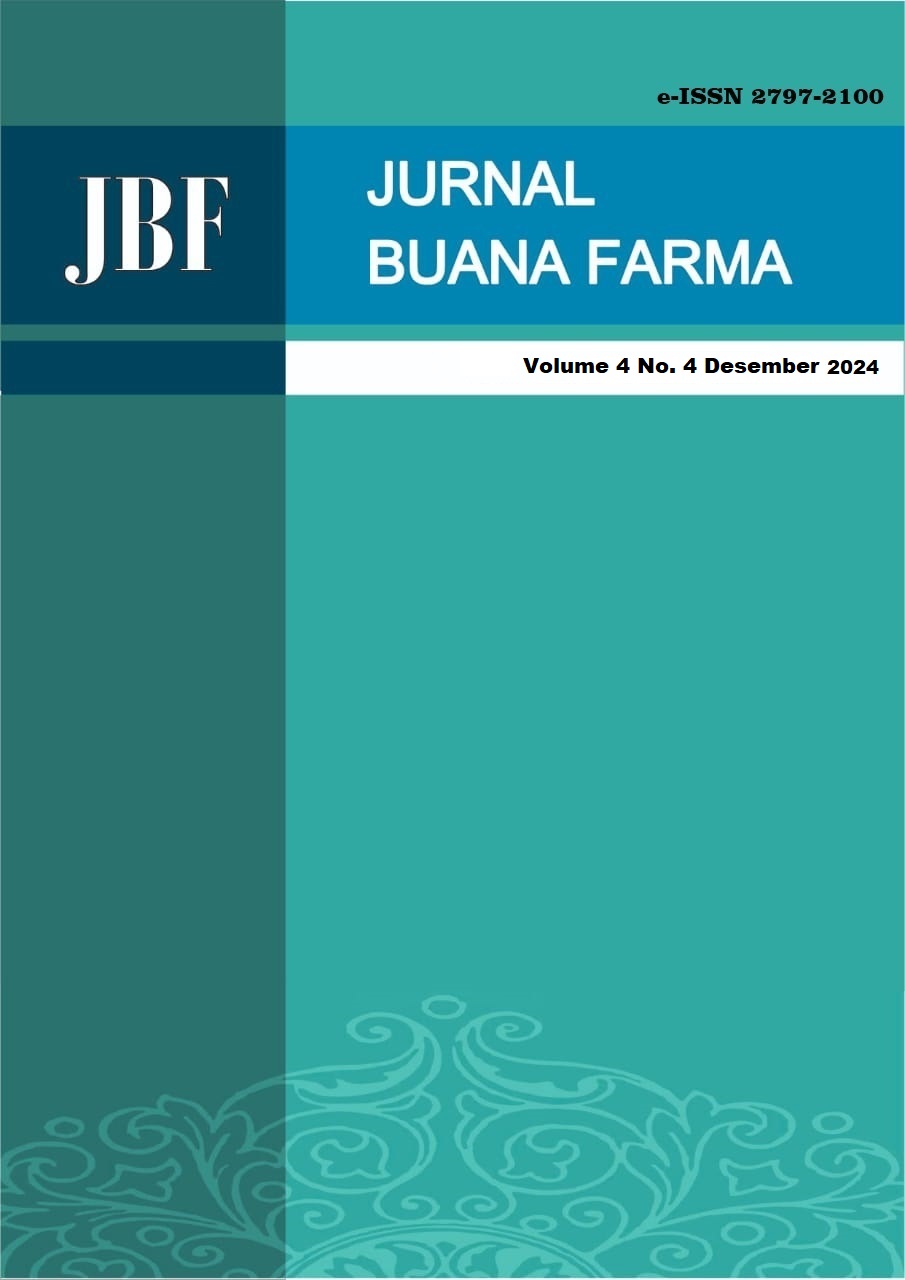Literature Review Artikel: MANFAAT MINYAK ATSIRI PADA BERBAGAI BAGIAN TUMBUHAN
Abstrak
Minyak atsiri merupakan senyawa beraroma khas yang ditemukan di berbagai bagian tanaman. Penelitian ini bertujuan untuk mengevaluasi manfaat minyak atsiri yang diekstraksi dari beragam bagian tumbuhan menggunakan metode yang berbeda. Kajian dilakukan dengan pendekatan literature review, menganalisis data dari berbagai artikel jurnal. Hasil kajian menunjukkan bahwa minyak atsiri yang dihasilkan dari tiap bagian tanaman memiliki komposisi dan khasiat yang bervariasi. Daun zodia (Evodia suaveolens) memiliki minyak atsiri, yang diperoleh melalui metode distilasi, memiliki rendemen sebesar 0,6471%, dengan komponen utama 4(5H)-Benzofuranone berdasarkan analisis GC-MS. Sementara itu, ekstraksi dengan metode penyulingan uap dan air dari kulit jeruk purut (Citrus hystrix) menghasilkan minyak atsiri yang terdiri dari 25 komponen dengan aktivitas sebagai antioksidan. Metode distilasi uap pada kulit buah langsat (Lansium domesticum) menghasilkan minyak atsiri dengan rendemen 0,18%, yang mengandung senyawa utama berupa monoterpenoid dan seskuiterpenoid. Kajian ini menegaskan bahwa minyak atsiri dari berbagai bagian tanaman memiliki potensi sebagai sumber senyawa bioaktif dengan manfaat yang beragam
Referensi
Erliyanti, N. K., & Rosyidah, E. (2017). Pengaruh Daya microwave terhadap yield pada Ekstraksi Minyak Atsiri Dari bunga Kamboja (plumeria alba) Menggunakan Metode microwave hydrodistillation. Jurnal Rekayasa Mesin, 8(3), 175-178.
Fajar, A., Ammar, G. A., Hamzah, M., Manurung, R., & Abduh, M. Y. (2019). Effect of tree age on the yield, productivity, and chemical composition of essential oil from Cinnamomum burmannii. Current Research on Bioscences and Biotechnology, 1(1), 17-22.
Handayani, P.A., Nurcahyanti, H.(2015). Ekstraksi Minyak Atsiri Daun Zodia (Evodia suavolens) Dengan Maserasi dan Destilasi Air. Jurnal Bahan Alam Terbarukan, 4(1):1-7.
Latifah, F., Taufiq, H., & Fitriyana, N. M. (2023). Uji Antioksidan dan Karakterisasi Minyak Atsiri dari Kulit Jeruk Purut (Citrus hystrix D. C). J Pharm Sci, 1, 47.
Lunggela, F. B., Isa, I., & Iyabu, H. (2022). Analisis Kandungan Minyak Atsiri Pada Kulit Buah Langsat Dengan Metode Kromatografi Gas-Spektrometer Massa. Jambura J Chem, 4(1), 10-16.
Puspa, O. E., Syahbanu, I., & Wibowo, M. A. (2017). Uji fitokimia dan toksisitas minyak atsiri daun pala (myristica fragans houtt) dari pulau lemukutan. Jurnal Kimia Khatulistiwa, 6(2).
Rahayu, W. S., Utami, P. I., & Fajar, S. I. (2016). Penetapan kadar tablet ranitidin menggunakan metode spektrofotometri UV-Vis dengan pelarut metanol. PHARMACY: Jurnal Farmasi Indonesia (Pharmaceutical Journal of Indonesia), 6(03).
Rahmadani, N., Ruslan, R., & Satrimafitrah, P. (2018). Penerapan Metode Ekstraksi Pelarut Dalam Pemisahan Minyak Atsiri Jahe Merah (Zingiber officinale Var. Rubrum). KOVALEN: Jurnal Riset Kimia, 4(1), 74-81.
Rassem, H. H., Nour, A. H., & Yunus, R. M. (2016). Techniques for extraction of essential oils from plants: a review. Australian Journal of Basic and Applied Sciences 10(16), 117-127.
Ridzmullah, W. P., Neneng, S. S., Art, Y. S. (2017) Perbandingan Efek Larvasida Minyak Atsiri Daun Cengkeh (Syzygium aromaticum L.) Varietas Zanzibar dengan Temephos terhadap Larva Nyamuk Aedes aegypti 4(1).
Yuliana, B., Makkulawu, A., & Amal, A. R. (2023). Formulasi dan Uji Kestabilan Fisik Lilin Aromaterapi Minyak Atsiri Bunga Melati (Jasminum sambac L). Journal Syifa Sciences and Clinical Research, 5(1).













